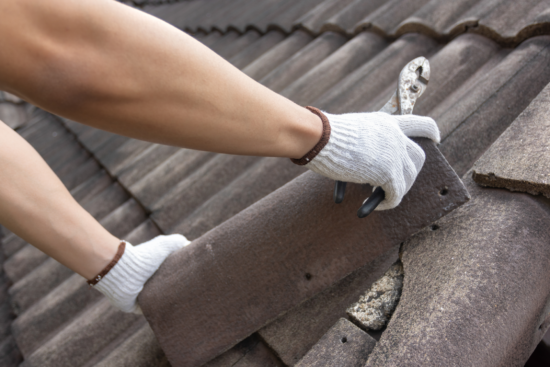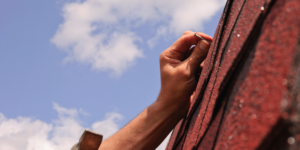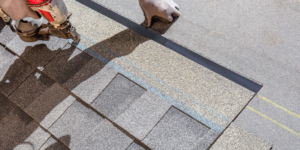© All Rights Reserved | Roof Replacement and Repair - Zaman Roofing LLC. | Website Design & CT SEO Powered by High Point SEO CT
- Google Rating5.0Based on 33 reviewsZaman Roofing - CT Roofing Contractors & Roof Repair5.0Sergey Y."Zaman Roofing” recently completed a roof replacement project in our condo complex, and we are extremely satisfied with their service. From start to finish, their team demonstrated professionalism, efficiency, and exceptional craftsmanship. They were prompt in their communication, providing detailed explanations and answering all our questions. The crew arrived on time, worked diligently, and completed the project within the estimated timeframe.Not only did Zaman Roofing exhibit outstanding technical skills, but they also ensured minimal disruption to our daily activities. They took great care to protect our property, cleaning up thoroughly each day and leaving no trace of debris behind.The quality of the new roof is outstanding. Zaman Roofing used top-grade materials and paid attention to every detail, resulting in a sturdy and visually appealing finished product. The roof has significantly enhanced the overall appearance of our condo complex.We would highly recommend Zaman Roofing to anyone in need of roofing services. Their professionalism, expertise, and attention to customer satisfaction make them a reliable choice for roof replacements. We are grateful for their excellent work and would not hesitate to hire them again in the future.Christopher Z.Zaman Roofing was AWESOME!!!! This is my third time doing a roof in CT on my third home and Zaman did an outstanding job on my rather unique roof line. They even replaced a skylight. I needed a Roof Contract in place before insurance would allow the purchase because the seller was a DeeBag. Zaman worked with my realtor, banker, etc and even waited patiently while the seller delayed the process by 4 months. The week I closed, Zaman Roofing was up and at em. Stripping, prepping and replacing. In and Out. Property was nice and clean after the work was complete. I would highly recommend.Steve TZaman Roofing, located in Berlin, CT, truly excels in providing top-notch roofing services. I am absolutely thrilled to give them a well-deserved 5-star review for their outstanding work. They have proven themselves as experts in roofing Berlin CT, and I couldn't be happier with the results.When it comes to roofing in Berlin, Zaman Roofing stands out from the competition. Their team of skilled professionals demonstrated exceptional attention to detail during the installation of my new roof. They meticulously handled every aspect of the project, ensuring both aesthetics and durability were top-notch.What impressed me the most was Zaman Roofing's commitment to customer satisfaction. From my initial contact with them, they were responsive, courteous, and eager to understand my specific roofing needs in Berlin. Their exceptional customer service throughout the entire process made me feel valued as a client.Zaman Roofing's expertise in roofing Berlin is truly commendable. They have an extensive portfolio of successful projects throughout Berlin, CT, showcasing their skill and knowledge in a variety of roofing styles and materials. Regardless of the complexity of the job, they have the necessary resources to deliver exceptional results.I cannot emphasize enough how satisfied I am with Zaman Roofing's services in Berlin, CT. Their professionalism, reliability, and dedication to their craft are unparalleled. If you're searching for exceptional roofing services in Berlin CT, Zaman Roofing is the company to choose. They will exceed your expectations in every way.In conclusion, Zaman Roofing unquestionably deserves a stellar 5-star rating for their exemplary roofing services in Berlin, CT. Their expertise in roofing Berlin and roofing Berlin CT shines through in their exceptional workmanship and customer service. I highly recommend Zaman Roofing for all your roofing needs.Gary G.Zaman replaced the roof on my 2,200 sq. ft. colonial in 2015. The workmanship was perfect. Unfortunately, over time, the top-of-the line shingles discolored. He was totally supportive in getting the manufacturer to replace them at no cost to me. He just replaced the roof with the new shingles. It was another perfect job. It was completed in one day. The crew was great and they cleaned the area spotless.Chris DWe used Zaman Roofing for our Roof and Gutter Replacement, I acquired 5 quotes for the work and found Zaman to be the most reasonable, it was a Good Decision to choose Zaman Roofing, Seweryn was Professional in every aspect and the Clean-up was nothing short of Amazing, I would Highly Recommend using Zaman RoofingRobert D.Excellent Service and Value - great crew and easy to deal with - highly recommended !Sunghoon P.Great work and reasonable price. I am so happy with their service. I asked a bunch of questions before and after the service and his responses were very prompt and straight to the point. Highly recommend.Adrienne M.I am so pleased that I used this company. My new roof looks fantastic. Such a hard working crew. Seweryn was informative and professional. Price was very completive. Don't hesitate to use them you will be very satisfied. Highly recommend!Nancy M.Good communication, timely response and knowledgeable. Very happy with our experience and highly recommend this company.Beata M.We used Zaman for our roof replacement recently and are very pleased. They replaced our roof in one day and gave us a very competitive quote. Good quality of work. Highly recommended.Lori K.They were here when they said they would. Professional & left everything neat ,cleaned up everything. They were in & out in a day & a half. Would recommend Zaman roifing.Dan R.A+ service, professional and quick response time.Anna G.Zaman and his crew provide great workmanship they installed new roofs they take great pride in the work they do. They were punctual and did a amazing job with the roof installation and clean up. Highly recommend Zaman Roofing to family and friends. Thank you for the opportunity to work with such a amazing contractorScott M.Awesome contractor, I would highly recommend him to family & friends. Seweryn & his crew were here on time & worked diligently. They were the happiest workers I've ever dealt with (I am a former construction project manager with the Federal government). Any & all questions were answered. My neighbors couldn't believe they finished the job in one day & complimented how great the new roof looks.Clement D.Great roofing contractors. I love to recommend it to my friends and family.Karen 9.With the quality, price, timeliness, all round nice guy and great crew, Zaman Roofing LLC is what other companies aspire to be.... Clean, helpful and a pleasure to recommend....james C.Excellent experience from start to finish, all appointments and work times met in a timely fashion, workmanship and clean up left nothing to be desired.Would be a definite recommendation, very pleased.Margaret B.I had obtained multiple quotes and did my due diligence research and Seweryn Zaman came back with fair price and good recommendations. He was professional, explained everything that he was going to do and never once he rushed me during decision process. He showed up on time with his hard working crew and finished my roof in one day. I was amazed with his crew who worked like busy bees. Very impressed with the clean up process and the end product. Two months after he finished my roof he was still helping me deal with the insurance company making sure I had everything I needed. Thank you SewerynSteve B.Very professional and easy to work. The crew came in, replaced my roof and then cleaned up everything! Highly recommended.Jim O.Competitive quote among four others. Seweryn Zaman provided larger color samples of the shingle colors we were interested in. He obtained the building permit, showed up on the day expected with his entire crew. Our older roof was on 24" trusses and needed more plywood replaced than anticipated. He got the additional sheets replaced on the day of the re-roofing. The crew worked with him late until the job was done and picked up every piece of old debris. The roof passed final town inspection with no concerns. Zaman Roofing is easy to deal with; he's responsive on text messages and phone calls. I used them in the past for an emergency repair and he found a well-hidden leak from the builder.Dale C.The crews did a good job, and the leader of the crew did a great job when they replaced the roof of my house in Farming on 7/6&7 this year. When they worked on the project, they worked professionally and in detail. We are very pleased with the work they have done, and highly recommend people to have the company worked on their roof projects.Forrest B.Zaman's was very professional, excellent quality of work and very responsive to our needs. This roofing experience was excellent from start to finish and provided an excellent value. Would certainly recommend them to any friend.Yonatan M.We used Zaman Roofing to replace our roof in 2019 and could not be happier with the service and product. A highly professional company and great personal interaction with the owner. The workers took great care of our landscaping, and the owner was there frequently to supervise the work and take care of finishing touches like flashing the chimney. We have had zero issues since then and highly recommend this company.Quinn V.Zaman was awesome. He was communicative, on-time, and was able to give me a quick inspection of our roof despite the rain. I rarely have a contractor tell me that I didn't need to spend any money, but Zaman told me my roof was fine for the next several years.magdalena K.We recently used Zaman Roofing to replace our 26-year-old roof. Right from the start they were great! Sevy was extremely professional and knowledgeable and gave us a great quote. Everything was done as they described and the final project looked great. The owner was on the job from start to finish as he promised.Ariadna G.Our experience with Zaman Roofing was excellent. I was very impressed with both their work and their customer service. Seweryn was very knowledgeable and professional.Larry G.What a wonderful business. Very responsive. They showed up exactly when expected, completed the project quickly and accurately and left no trace after clean up. All with a very competitive price. I would highly recommend Zaman to anyone looking to have roofing work done.STEVE R.I was very pleased with the roof and gutter repairs performed by Zaman Roofing on two of my buildings. Good workmanship and fair prices, I would recommend and use again.Danielle D.These guys stripped and reshuffled my roof is 1 day! They did an awesome job. Roof is beautiful. He uses a dump trailer which is great and they cleaned up well. Very happy with the work. Also pricing was fair.

Roof Repair 101: Common Issues and DIY Solutions
Category: Roof Repairs • October 10, 2023
The roof of our homes is often overlooked until a problem emerges. We often overlook the protective canopy above our heads from sun, rain, and snow. But what happens when fractures appear? Or do leaks appear? Start fixing common roof issues using DIY solutions.
Identifying Common Roof Issues
Roof maintenance is often disregarded when it comes to home integrity. Early detection of common roof faults can prevent costly repairs. Watch for these signs:
- Leaks: Ceiling or wall water stains may indicate a leaky roof. Also, check your attic for moisture areas or discoloration.
- Missing shingles: Bare roof patches are typically due to missing shingles. This can cause more roof damage and should be treated immediately.
- Damaged flashing: Flashing seals chimney, vent, and skylight gaps. Damage or looseness might cause leaks.
- drooping: A drooping roof may indicate rotten wood or weak supports.
- Cracked caulk: Deterioration of caulk around pipes and vents can cause leaks over time.
These frequent issues can be addressed early before they worsen and cause additional damage.
DIY Solutions for Minor Roof Repairs
Doing simple roof repairs by yourself can save time and money. Although significant repairs should be left to the pros, a little DIY can go a long way for lesser difficulties.
One common homeowner issue is a leaky roof. Water stains on your ceiling or walls must be addressed immediately. Locate the leak first. This may require attic inspection or roof crawling.
After locating the issue, you can try different DIY fixes. Small leaks or gaps in shingles can be fixed with roofing cement or sealer. Clean the area well before applying patches.
Missing or damaged shingles must be replaced. Replace your shingles with matching ones and roofing nails. Nail down a new shingle to replace the broken one.
Clogged gutters can cause roof damage and water backups. Remove debris from your gutters with gloves and a trowel to fix this. Then hose them down to clear them.
Before starting a DIY roof repair project, emphasize safety! Protect yourself with gloves and eyewear when climbing ladders or working at heights.
Knowing When to Hire a Professional
DIY small roof repairs can be cost-effective and rewarding, but sometimes it’s best to hire a pro. You must notice the indicators that require professional help.
Extensive damage is a sign. Hire a roofing contractor if your roof has serious storm damage or multiple leaks. They can safely and efficiently perform difficult repairs with their experience and equipment.
You should also consider your height comfort. Ladders, steep slopes, and unstable surfaces are needed for roof repair. If you’re unsure of your talents or feel unsafe, contact a specialist.
If DIY remedies haven’t worked or have made the problem worse, call in the pros. Professional roofers can diagnose and fix the issue at its source.
Attempting repairs yourself could jeopardize your roof warranty or insurance, so contacting a professional may be necessary.
While completing simple repairs yourself can save money, hiring a professional can assure your home’s durability and peace of mind.
Preventative Maintenance Tips for a Healthier Roof
Regular maintenance keeps your roof healthy and long-lasting. Take preventative efforts to avoid significant difficulties that require costly repairs. Preventative roof care tips:
- Inspect Regularly: Visually inspect your roof twice a year, especially in spring and fall. Check for loose shingles, cracked flashing, and wear.
- Clear Debris: Regularly clean your roof of leaves, branches, and other debris. Debris can trap moisture and cause rotting or mold.
- Clean Gutters: Clogged gutters can back up water onto the roof, causing leaks and damage. Clean gutters periodically for proper drainage.
- Trim Overhanging Branches: Storms and heavy winds can damage roof limbs. Reduce overhanging branches that could fall on your roof.
- Check Seals and Caulking: Check roof vents, chimneys, skylights, and other openings for worn seals and caulking. Replace as needed for watertight sealing.
- Deter Moss Growth: Install zinc strips along ridge lines in moss-prone areas.
Regularly taking preventive actions throughout the year can improve the lifespan of your roofing system and reduce future repair costs. Early detection is crucial for addressing minor concerns before they become major issues.
Essential Tools and Materials for DIY Roof Repair
For successful DIY roof repair, you need the correct tools and materials. Essential items to have on hand:
- Safety gear: Before entering your roof, make sure you have the right gear. A solid ladder, non-slip shoes, and a harness or safety line are needed.
- Extra roofing nails and shingles: Damaged or missing shingles require extra roofing nails and replacement shingles. Choose shingles that complement your roof.
- Roofing adhesive/sealant: A good adhesive or sealant can cure minor roof leaks or cracks. Look for one intended for roofing and weatherproofing.
- Hammer or nail gun: Depending on your preference, a hammer or nail gun will be needed to install new shingles. Make sure you have the right tool.
- Flashing around chimneys, vents, and skylights prevents water from entering vulnerable roof sections. Extra flashing lets you repair damaged parts.
- Caulking gun: Seal roof vents and other protrusions with a high-quality silicone caulking gun.
Remember that certain repairs require specific tools or materials. If wondering what items are needed for repair work, consult professionals.
Conclusion
Although roof repair may seem daunting, you can fix many common issues yourself with the correct knowledge and tools. Early detection and response can avert larger, more expensive repairs.
Always put safety first when roofing. Hire a roofing contractor if a repair is too complicated or dangerous. Their expertise and experience ensure proper and effective roof repair.
For a healthier roof, preventative maintenance is essential in addition to necessary repairs. Keep your roof in good condition by inspecting it, cleaning gutters, pruning overhanging trees, and checking for damage.
DIY roof repairs require the correct tools and materials. Buy excellent ladders, safety harnesses, pry bars, roofing nails/screws, sealants/adhesives for your roofing material.




